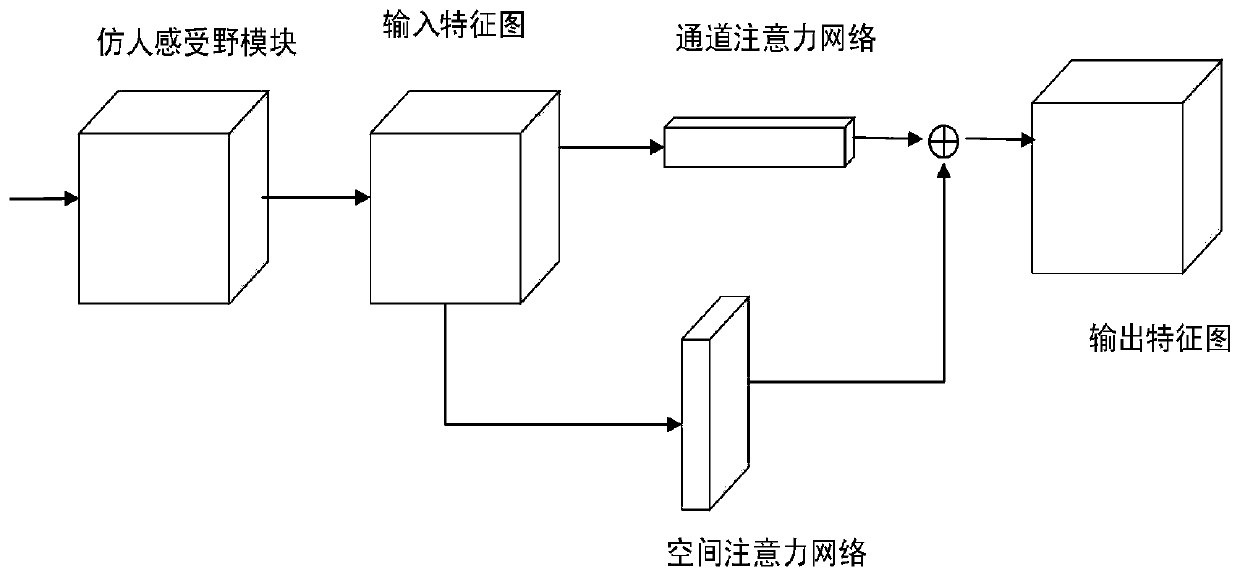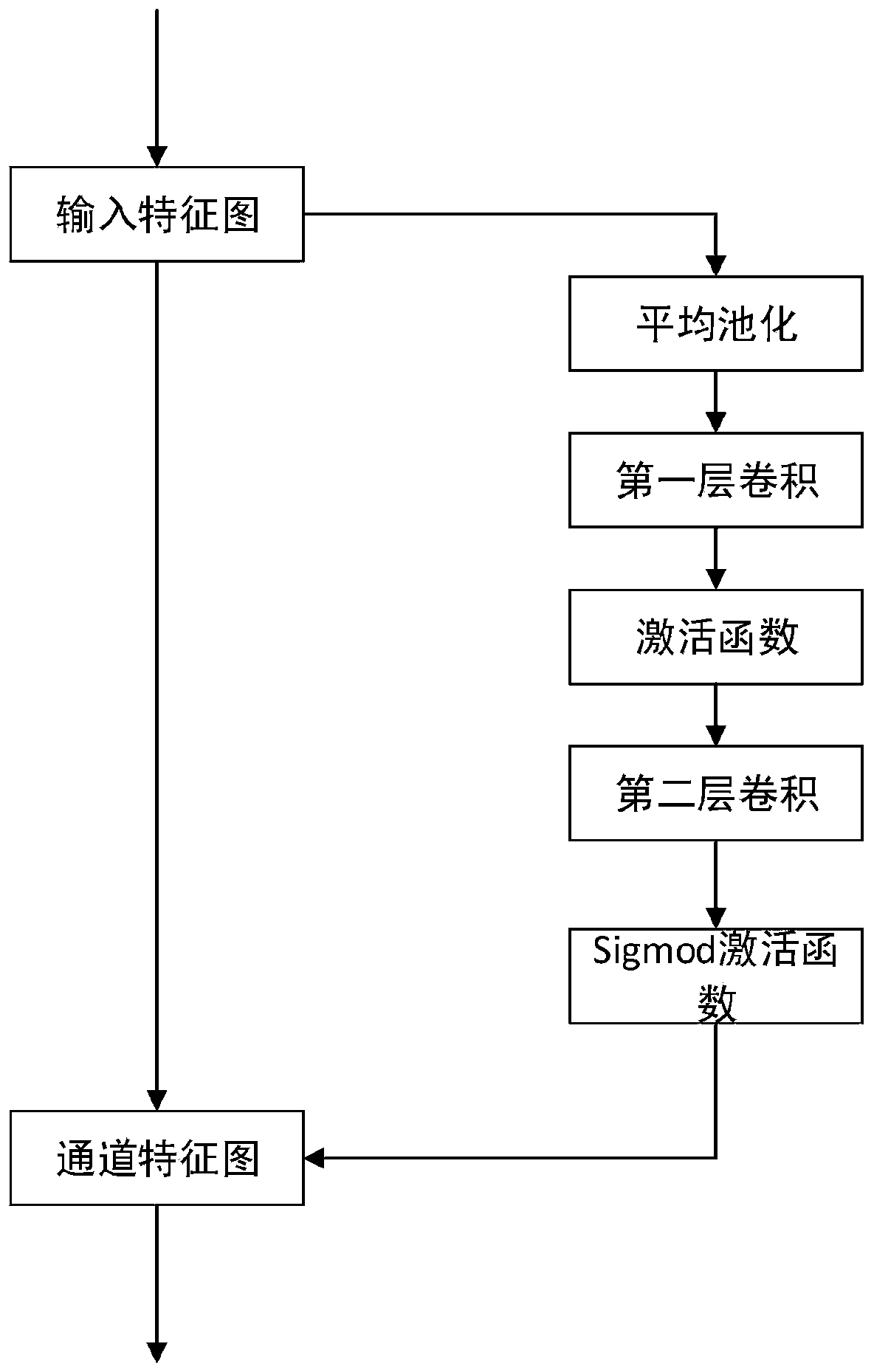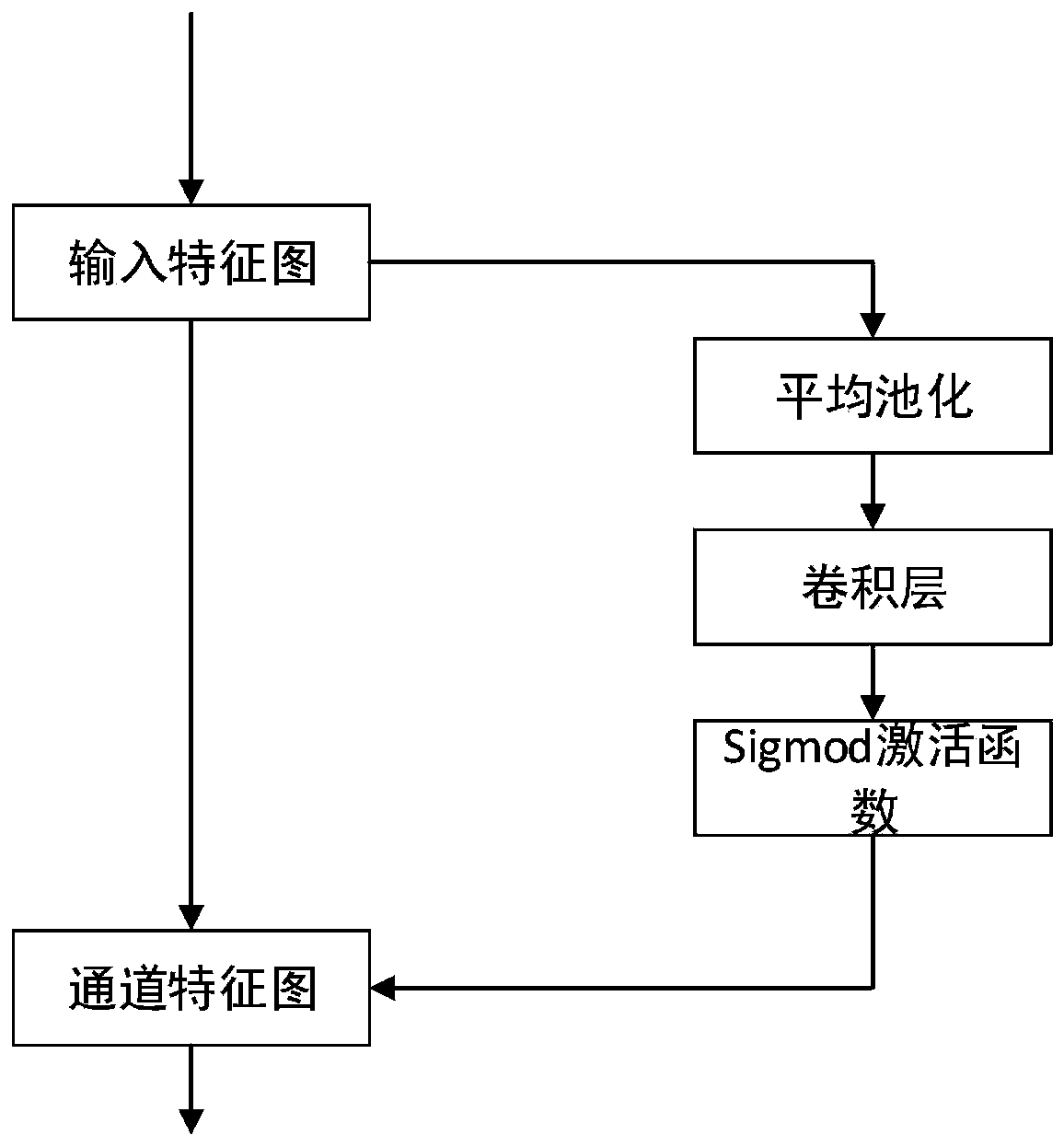Remote sensing target detection method of dual attention mechanism
A technology of target detection and attention, which is applied in the field of remote sensing target detection, can solve problems such as weak discrimination, insufficient network representation ability, and weak network model representation ability, so as to improve robustness, discrimination and accuracy and the effect of generalization
- Summary
- Abstract
- Description
- Claims
- Application Information
AI Technical Summary
Problems solved by technology
Method used
Image
Examples
Embodiment Construction
[0029] In order to make the object, technical solution and advantages of the present invention clearer, the present invention will be further explained below in conjunction with the accompanying drawings.
[0030] The double attention mechanism remote sensing object detection method that the present invention provides, flow process is as follows figure 1 Shown, specifically include the following steps:
[0031] (1) Step 1: Input a multi-scale remote sensing aerial image.
[0032] (2) Step 2: Segment the input multi-scale remote sensing aerial image, and randomly segment the image into a size of 512*512.
[0033] (3) Step 3: Input a 512*512 size picture into the network, and after related convolution operations, a feature map is obtained through a receptive field module that imitates human vision.
[0034] (4) Step 4: Input the feature map into the dual attention mechanism, and redefine the feature map through the convolution operation of the channel and the spatial dimension...
PUM
 Login to View More
Login to View More Abstract
Description
Claims
Application Information
 Login to View More
Login to View More - R&D
- Intellectual Property
- Life Sciences
- Materials
- Tech Scout
- Unparalleled Data Quality
- Higher Quality Content
- 60% Fewer Hallucinations
Browse by: Latest US Patents, China's latest patents, Technical Efficacy Thesaurus, Application Domain, Technology Topic, Popular Technical Reports.
© 2025 PatSnap. All rights reserved.Legal|Privacy policy|Modern Slavery Act Transparency Statement|Sitemap|About US| Contact US: help@patsnap.com



